History
The George Calon family bought the property on which the barn sits in 1957 from the Sadlo family after Dave Sadlo died. The barn was built in 1917 and was modeled after the bull barn at the EP Ranch, or the Prince of Wales Ranch (link to an online version of the book “Prince Charming Goes West”), near High River, Alberta. You are strongly encouraged to click here and here for more information on the E.P. Ranch, which was designated a Provincial Historic Resource in 2004. Additionally, you can scroll to the end of the page for more photos and links.
Both the barn and the house on the Sadlo property were built by the Schares to the specifications of Joe Sadlo. The barn had steel stanchions on the dairy side, steel posts and tack hooks throughout the main floor, cement floors and foundation, a single rail manure carrier on the north-west side, and hardwood floors in the loft. Originally, the barn housed the Sadlo’s draft horses, which they used for their farming operation and for breeding. They also had milk cows and a grain cleaning “plant”. Slowly, the Sadlo’s farm dwindled until only Dave was left living on the property. You can read more about the Sadlo family at the bottom of this page.
Patrick Calon used the barn for milk cows for a time. He never had work horses and ceased his cattle operation in the 2000s. Pat poured a cement floor in the barn in 1979 so that the barn could be used as a granary. Shortly after, they stopped using it as a granary because they found that the weight of the grain was forcing the barn apart and would eventually cause it to burst.
In its day, the barn was bustling. Starting at the south-west and going North, there was a pen for foaling, stalls for three sets of horse teams each with hay chutes, the single rail manure carrier, the harness room, and a pen for calving. Starting at the south-east and going North, was the tact room, then a pen, stalls for two more sets of horse teams each with hay chutes, the door on the east side of the barn, the hay-carrier’s rope that led outside and attached to a horse, the oat bin, and, finally, nine steel cow stanchions. The barn was built with frame construction and platform framing.
Calon, Patrick. Personal communication. 12 Jul. 2016.
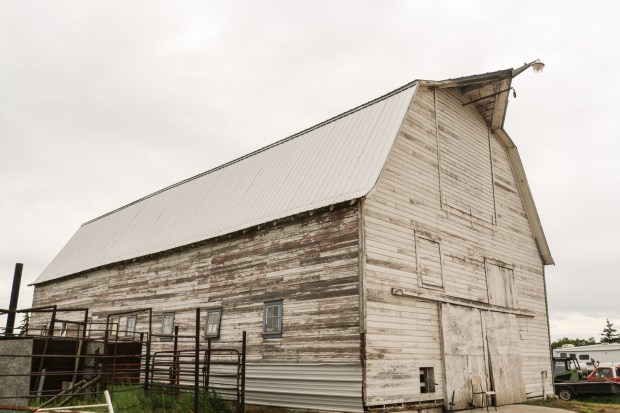
This frame shows the southern face and western side of the barn.
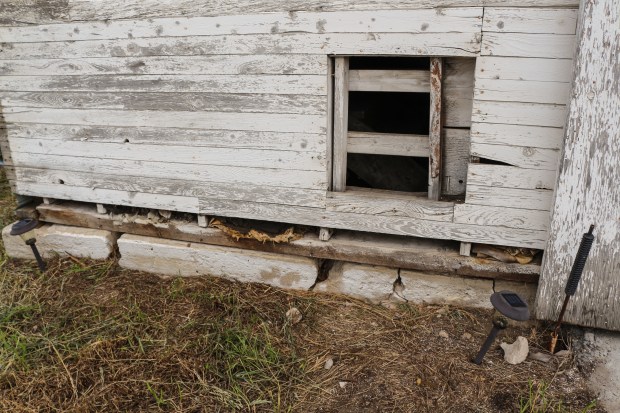
The foundation is mostly fully concrete with few instances of stones. It seems that paper was used as means of insulating. There are a few places where one can see paper sticking out of holes and cracks in the barn wood.
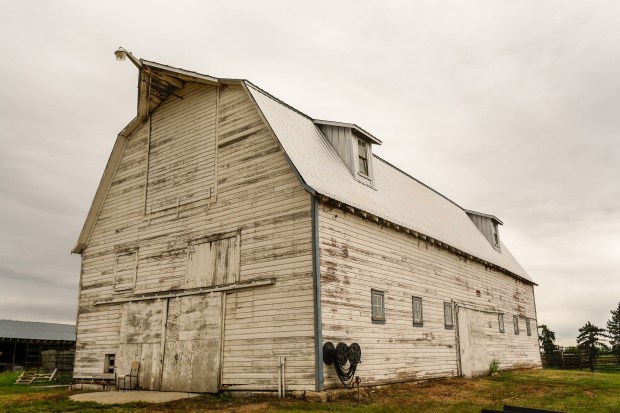
This frame shows the southern face and eastern side of the barn. One stall is lost on the east side of the barn due to the door and entry way, visible in this picture. The East side of the barn also has two shed roofed dormers.

The southern face of the barn has a hay hood and hay track

The property owner did some renovations to the stairs on the south-western corner of the building to allow easier access to the loft.

The door on the northern face of the barn is visible in this frame. The features of interest are the metal posts used to support the wooden beams for the loft. The majority, if not all, of the barn’s stalls are metal.

This frame shows the south-western corner of the barn.

One of the steel posts that supports the barn’s beams.

A beam with a platform for the steel post to support.

Some of the posts have iron hooks for hanging gear on.
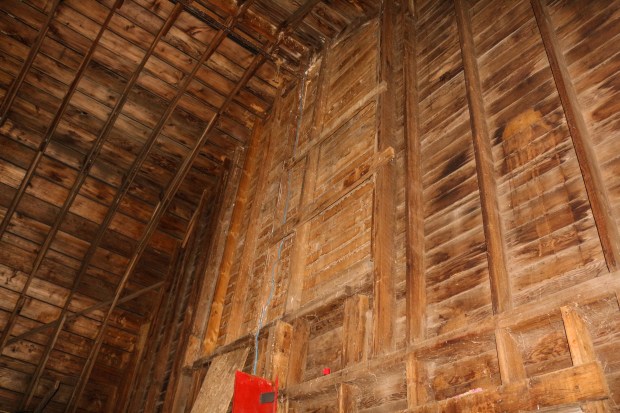
This frame shows the loft door on the southern face of the barn.
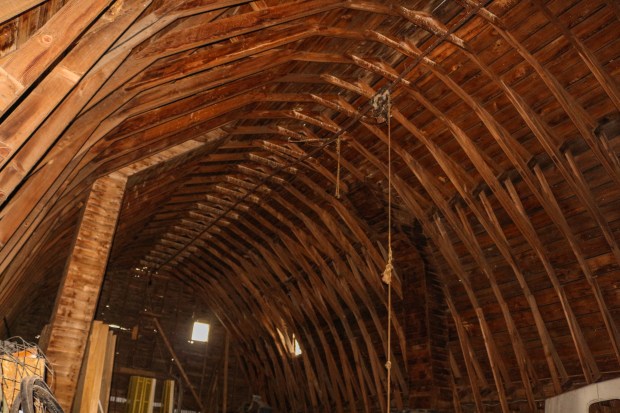
This frame was taken from the South whilst looking North and was taken from the top of the staircase. The hay track is visible in the peak of the roof. The ventilator chutes do not have the ability to circulate air since they are not connected to a metal ventilator or a cupola outside.

This frame shows the western half of the roof. The roof is a gambrel shape and this is due to the construction technique. The wooden trusses mean that each side of the roof has two slopes.

This frame shows the eastern half of the barn. The eastern half of the barn has two dormers that are covered in metal.
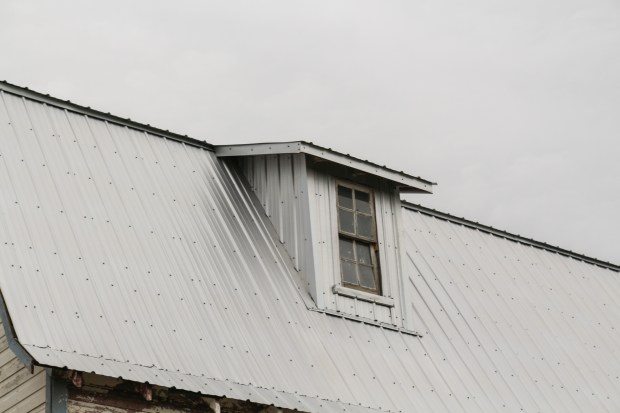
The dormers on the east side are representative of the E.P. Ranch barn.

This frame shows the northern face of the barn. Part of this face was recovered in metal siding to protect the face from the weather.

This photo is a close up of the northern dormer.
Location
52.613619, -112.334626 SE 14-42-17 W4
Characteristics:
Barn Condition: Good
Construction Date: 1917
Features: Two dormers on east side, hay hood and hay track, used to have air circulation
Roof Shape: Gambrel
Paint: White with blue trim
Decorations: None
Roof Covering: Metal
Siding: Wooden tongue-and-groove
Foundation: Concrete
Additional Information on the Property
E.P. Ranch
To read more on the E.P. Ranch click here.
Please use the following image numbers and names to find the following images from the Glenbow Museum Archives.
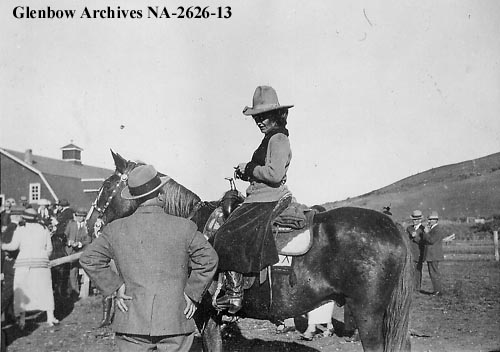
Flores La Due at EP Ranch, Pekisko, Alberta.
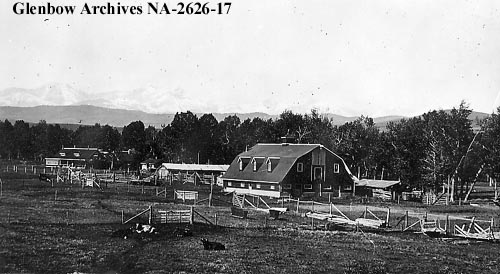
View of EP Ranch, Pekisko, Alberta.
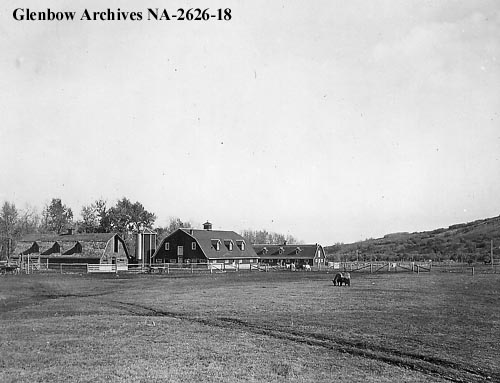
View of EP Ranch, Pekisko, Alberta.
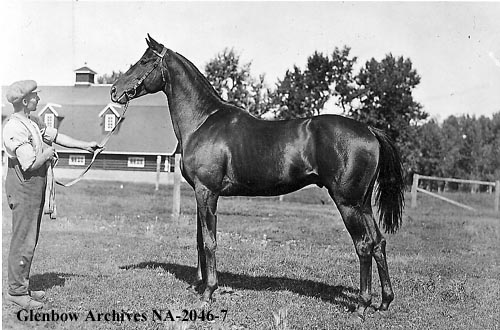
“Will Somers”, thoroughbred stallion, EP Ranch, Pekisko, Alberta.
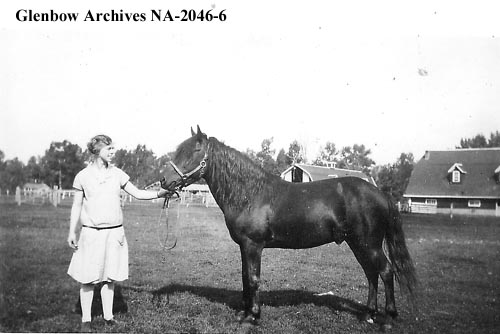
Helen Carlyle and Stallion “Tiny”, EP Ranch, Pekisko, Alberta.
The Calons
The following is a brief history on the Calon family.
Pat. “Calon, Patrick Sr., the Family”. Wagon Trails in the Sod: A History of Heisler and Area. 1st ed. Heisler: Heisler Historical Society, 1982. Print.
The Sadlos
The Sadlo’s owned the Calon property before George Calon. The following story starts with, “I would like to tell the Sadlo Story Story the way we heard it. . .”
Malpas, Arden. “Sadlo, Joe and Mary.” Wagon Trails in the Sod: A History of Heisler and Area. 1st ed. Heisler: Heisler Historical Society, 1982. Print.
Schares/Meyer
Please click to learn more about the Schares and the Meyer (Barn 1, Barn 2, Schares Family History) families listed in the Sadlo’s passage.



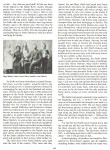



2 thoughts on “Sadlo-Calon”